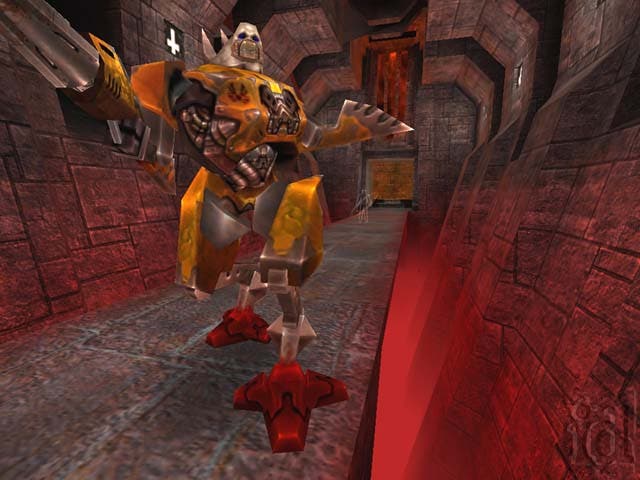Sound And Vision
Putting the multi back into multimedia...
In today's world we tend to forget the true meaning of "multimedia", and instead concentrate too highly on the visual part and not enough on the audio part.
It is true that the visual aspect of any multimedia package, whether it be a game, DVD, or whatever else, is very important, but where would any of these be without the sound?
Multimedia
In a bid to catch up to the fast paced world of 3D acceleration, companies such as Aureal and Creative Labs have attempted to create 3D audio systems that convey as much in terms of audio experience as the top end graphics cards are now capable of for the visuals.
They have done a great job, and no one would ever claim that APIs ("Application Programming Interfaces") like EAX and A3D are any less convincing to the ear than graphics APIs like Glide, Direct3D and OpenGL have been to the eye.
But many users concentrate far too much on their graphics chips and the monitors they connect to them rather than striking a balance between the audio and the visual. Obviously no one would want to play graphically simple games with truly realistic positional audio, but on the flip-side of the argument would anyone really want to play extremely complex, realistic games that utilised only simple stereo?
I would assume, and I would hope this to be a fair assumption, that most users would want the best of both worlds. It would also appear that developers also tend to agree with this logic.
With titles like Unreal Tournament and Quake 3 Arena, developers have gone not only for the superior visual impact but are now also trying to give the user a supreme audio experience too.

Under Pressure
Unfortunately this isn't always the case, and John Carmack (top dog at Quake 3 Arena's developers, id Software) had previously stated that there would probably be no "special" use of 3D positional audio.
Under pressure though, he has seemed to succumb to the wishes of the online users who wanted the inclusion of 3D audio effects.
The lastest Quake 3 demo test now incorporates A3D, but the support isn't exceptional, and in the demo it is prone to causing unpredictable crashing (at least in my experience). Unreal Tournament also suffers from problems on the audio front, which will ultimately lessen the experience.
There are titles that do fully use 3D audio though, and benefit greatly as a result. Freespace 2 is one example, and if any of you have experienced the truly awesome positional audio you will know what I mean.
Developers are slowly supporting both A3D and EAX, and games are benefiting greatly from their inclusion. It seems that finally 3D positional audio is being taken as seriously as 3D graphics acceleration, which has to be a good thing.
This brings me nicely on to my next point... What do you listen to your wonderful 3D audio on?
You will probably have at least a 15" monitor, and most off the shelf PCs now come with 17" monitors. It is also likely that the most hardened gamers will have spent a fair bit on even better quality monitors in order to do their expensive graphics cards justice.
Audio Environments
So what about the sound setup?
The sound cards available today are relatively cheap in comparison to 3D graphics acceleration technology, but that doesn't mean they deserve any less to be spent on speakers than you spend on monitors for your graphics cards.
It is a shame then that most speaker systems available suffer from poor output quality and are unable to accurately output really good 3D audio.
True there are companies like Altec Lansing and Boston acoustics that have gone some way to provide relatively cheap speakers that convey a great deal of audio detail, and some manufacturers bundle these speakers with their higher end PCs.
Even these are limited though, and while they will provide a reasonable solution there are far better speaker packages available. One such company is Videologic. While best known for their PowerVR technology, they have recently moved into the field of speakers, and they have done a tremendous job of it.
Their range isn't cheap, but for those who wish to go the extra mile and have an audio set up that reflects the quality of their video set up they are certainly worth considering.
Videologic are only one example, but they have products which are ideally suited to both gaming and DVD movies. And a bit of foresight on their part even allows for some of their speaker packages to be connected together in order to provide the ultimate gaming and DVD soluion.
Now if one company can do this, then why can't more?
Conclusion
Eventually people will start to take more notice of 3D audio, and it will become as important as 3D graphics acceleration.
I'm sure in time we will see more developments in affordable high quality speaker packages that will do the world of 3D audio justice, but for now there seems to be very little interest in this area. It seems that we have forgotten exactly what multimedia means, and have mainly concentrated on one aspect thereby creating more of a unimedia environment.
I hope that we will soon see not so much of a reversal in this, but certainly see audio systems catch up and once again regain their place firmly alongside the graphical world.







